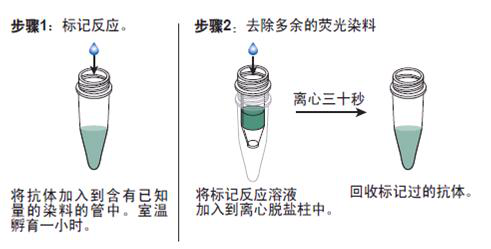
|

| 产地 | 进口、国产 |
| 品牌 | 上海莼试 |
| 保存条件 | Store at -20 °C |
| 货号 | CS10009 |
| 应用范围 | WB=1:100-500 ELISA=1:500-1000 IP=1:20-100 IHC-P=1:100-500 IHC-F=1:100-500 Flow-Cyt=1:100-500 IF=1:100-500 |
| CAS编号 | |
| 抗体名 | Anti-NMDA-NR1/NR1/NMDAR1 |
| 克隆性 | |
| 靶点 | 详见说明书 |
| 适应物种 | 详见说明书 |
| 形态 | 详见说明书 |
| 宿主 | 详见说明书 |
| 亚型 | IgG |
| 标识物 | 详见说明书 |
| 浓度 | 1mg/1ml% |
| 免疫原 | KLH conjugated synthetic peptide derived from human NMDAR1 N-terminus |
产品订购信息:
英文名称 Anti-NMDA-NR1/NR1/NMDAR1
中文名称 天冬氨酸受体抗体费用
别 名 NMDA-NR1; N-Methyl-d-Asprtate receptor 1; GRIN1; NMDA1; NMDAR1; NR1; Glutamate [NMDA] receptor subunit zeta 1; Glutamate receptor ionotropic N methyl D aspartate 1; Grin 1; Grin1; N methyl D aspartate receptor channel; N-methyl-D-aspartate receptor; N-methyl-D-aspartate receptor subunit NR1; NMD-R1; NMDA 1; NMDA NR1; NMDA R1; NMDA receptor 1; NMDA1; NMDAR 1; NMDAR; Nmdar1; NR 1; NR1; NMDZ1_HUMAN.


浓 度 1mg/1ml
规 格 0.1ml/100μg 0.2ml/200μg
抗体来源 Rabbit
克隆类型 polyclonal
交叉反应 Human, Mouse, Rat, Chicken, Dog, Pig, Cow, Horse
产品类型 一抗
研究领域 细胞生物 神经生物学 信号转导 细胞凋亡 细胞膜受体
蛋白分子量 predicted molecular weight: 103kDa
性 状 Lyophilized or Liquid
免 疫 原 KLH conjugated synthetic peptide derived from human NMDAR1 N-terminus
亚 型 IgG
纯化方法 affinity purified by Protein A
储 存 液 0.01M PBS, pH 7.4 with 10 mg/ml BSA and 0.1% Sodium azide
天冬氨酸受体抗体费用 产品应用 WB=1:100-500 ELISA=1:500-1000 IP=1:20-100 IHC-P=1:100-500 IHC-F=1:100-500 Flow-Cyt=1:100-500 IF=1:100-500
(石蜡切片需做抗原修复)
not yet tested in other applications.
optimal dilutions/concentrations should be determined by the end user.
保存条件 Store at -20 °C for one year. Avoid repeated freeze/thaw cycles. The lyophilized antibody is stable at room temperature for at least one month and for greater than a year when kept at -20°C. When reconstituted in sterile pH 7.4 0.01M PBS or diluent of antibody the antibody is stable for at least two weeks at 2-4 °C.
Important Note This product as supplied is intended for research use only, not for use in human, therapeutic or diagnostic applications.
产品介绍 Neuronal Marker
NMDA receptor subtypes of glutamate-gated ion channels possesses high calcium permeability and voltage-dependent sensitivity to magnesium. NMDAR1 plays a key role in synaptic plasticity, synaptogenesis, excitotoxicity, memory acquisition and learning. It mediates neuronal functions in glutamate neurotransmission and is involved in the cell surface targeting of NMDA receptors.Function : NMDA receptor subtype of glutamate-gated ion channels with high calcium permeability and voltage-dependent sensitivity to magnesium. Mediated by glycine. This protein plays a key role in synaptic plasticity, synaptogenesis, excitotoxicity, memory acquisition and learning. It mediates neuronal functions in glutamate neurotransmission. Is involved in the cell surface targeting of NMDA receptors.Subunit : Forms heteromeric channel of a zeta subunit (GRIN1), a epsilon subunit (GRIN2A, GRIN2B, GRIN2C or GRIN2D) and a third subunit (GRIN3A or GRIN3B); disulfide-linked. Found in a complex with GRIN2A or GRIN2B, GRIN3A or GRIN3B and PPP2CB. Interacts with DLG4 and MPDZ. Interacts with LRFN1 and LRFN2. Interacts with MYZAP.Subcellular Location : Cell membrane; Multi-pass membrane protein. Cell junction, synapse, postsynaptic cell membrane. Cell junction, synapse, postsynaptic cell membrane, postsynaptic density. Note=Enriched in post-synaptic plasma membrane and post-synaptic densities.Post-translational modifications : NMDA is probably regulated by C-terminal phosphorylation of an isoform of NR1 by PKC. Dephosphorylated on Ser-897 probably by protein phosphatase 2A (PPP2CB). Its phosphorylated state is influenced by the formation of the NMDAR-PPP2CB complex and the NMDAR channel activity.DISEASE : Defects in GRIN1 are the cause of mental retardation autosomal dominant type 8 (MRD8) [MIM:614254]. Mental retardation is characterized by significantly below average general intellectual functioning associated with impairments in adaptative behavior and manifested during the developmental period.Similarity : Belongs to the glutamate-gated ion channel (TC 1.A.10.1) family. NR1/GRIN1 subfamily.Database links : UniProtKB/Swiss-Prot: Q05586.1神经细胞标志物(NMDAR1)N-甲基-D-天门冬氨酸受体(NMDAR)是兴奋性氨基酸受体亚型之一,是由NMDAR1与不同的NMDAR2亚基组成的异聚体。近年实验研究发现,许多NMDAR拮抗药均具有活性,表明NMDAR在痛觉传递中具有重要作用,这为新型药的研究开发提供了新的作用靶点。

JNK (Rat c-Jun N-terminal kinases,JNK) ELISA Kit 大鼠c-Jun氨基末端激酶Multi-class antibodies规格: 48T
Anti-STAT4 信号转导和转录激活因子4抗体Multi-class antibodies规格: 0.1ml
Rhesus antibody Rh Goat Anti-human IgG/Bio 生物素标记的羊抗人IgG 规格 0.1ml
Tn- I ELISA Kit 大鼠肌钙蛋白Ⅰ 96T
NMDA epsilon 2 英文名称: 谷酸受体NMDAζ2抗体 0.2ml
phospho-B-Raf (Thr401) 英文名称: 磷酸化B-Raf抗体 0.1ml
Anti-STAT4 信号转导和转录激活因子4抗体Multi-class antibodies规格: 0.1ml
Kiss-1(Metastasis-suppressor KiSS-1 precursor) 转移抑制基因(抗原)Multi-class antibodies规格: 0.5mg
Anti-CD26 CD26抗体Multi-class antibodies规格: 0.2ml
Rhesus antibody Rh PAK4 p21激活激酶4抗体 规格 0.1ml
SULT1E1 Kit Human 人 SULT1E1 ELISA配对抗体 ELISA
TLX2 英文名称: T淋巴细胞同源蛋白2抗体 0.2ml
CD24 英文名称: CD24抗体 0.1ml
Anti-CD26 CD26抗体Multi-class antibodies规格: 0.2ml
NKB ELISA Kit(Ret) 大鼠神经肽BMulti-class antibodies规格: 96T
Anti-Bdkrb2/B2R/FITC 荧光素标记缓激肽B2受体抗体IgGMulti-class antibodies规格: 0.2ml
Rhesus antibody Rh ERK1/MAPK3 原活化蛋白激酶3抗体 规格 0.1ml
TARC/CCL17(Human thymus activation regulated chemokine) ELISA Kit 人胸腺活化调节趋化因子 96T
MX2 英文名称: 干扰素诱导GTP结合蛋白MX2抗体 0.2ml
Adenylate kinase 2 英文名称: 腺苷酸激酶2抗体 0.2ml
Anti-Bdkrb2/B2R/FITC 荧光素标记缓激肽B2受体抗体IgGMulti-class antibodies规格: 0.2ml
FASLG Protein Human 重组人 Fas Ligand / FASLG / CD95L 蛋白 (His 标签)
CNE-2 低分化细胞
ICOS Others Mouse 小鼠 ICOS / AILIM / CD278 人细胞裂解液 (阳性对照)
BxPC-3人原位*腺癌细胞 BxPC-3 in situ pancreatic adenocarcinoma cells 1640+10% FBS
小鼠细胞(分泌促生长激素分泌激素);AtT-20
人成纤维细胞( HCF) ( 5×105 ) GC-1, 鼠精原细胞 Mouse
CL-0456TM4(正常小鼠Sertoli细胞)5×106cells/瓶×2
SIGIRR Others Human 人 SIGIRR / TIR8 人细胞裂解液 (阳性对照)
人膀胱基质成纤维细胞RNAHBdSF miRNA5 μg
T24细胞,人膀胱移行细胞癌细胞 大鼠细胞(wistar 大鼠),CBRH7919细胞 RN-c, 大鼠皮质神经元
Ishikawa(人细胞) 5×106cells/瓶×2
hPC-PL-c 人类胎盘周细胞(hPC-PL) 500,000cells 小鼠巨噬细胞MMa
天冬氨酸受体抗体费用 FASLG Protein Human 重组人 Fas Ligand / FASLG / CD95L 蛋白 (His 标签)
CNE-2 低分化细胞
ICOS Others Mouse 小鼠 ICOS / AILIM / CD278 人细胞裂解液 (阳性对照)
BxPC-3人原位*腺癌细胞 BxPC-3 in situ pancreatic adenocarcinoma cells 1640+10% FBS
小鼠细胞(分泌促生长激素分泌激素);AtT-20
人成纤维细胞( HCF) ( 5×105 ) GC-1, 鼠精原细胞 Mouse

抗体的生物素化标记实验要点:
1. 天冬氨酸受体抗体费用 如在反应混合液中有叠氮钠或游离氨基存在,会抑制标记反应。因此,蛋白质在反应前要对 0.1mol/L碳酸氢钠缓冲液或0.5mol/L硼酸缓冲液充分透析;
2.所用的NHSB及待生物素化蛋白质之间的分子比按蛋白质表面的ε-氨基的密度会有所不同,选择不当则影响标记的效率,应先用几个不同的分子比来筛选最适条件;
3.用NHSB量过量也是不利的,抗原的结合位点可能因此被封闭,导致抗体失活;
4.由于抗体的氨基不易接近可能造成生物素化不足,此时可加入去污剂如 Triton x-100, Tween20等;
5.当游离ε-氨基(赖氨酸残基的氨基)存在于抗体的抗原结合位点时,或位于酶的催化位点时,生物素化会降低或损伤抗体蛋白的结合力或活性;
6.生物素还可能与不同的功能基团,如羰基、氨基、巯基、异咪唑基及*基,也可与糖基共价结合;
7.交联反应后,应充分透析,否则,残余的生物素会对生物素化抗体与亲和素的结合产生竞争作用;
8.在细胞的荧光标记实验中,中和亲和素的本底低,但由于链霉亲和素含有少量正电荷,故对某些细胞可导致高本底。
抗体的鉴定:
1)天冬氨酸受体抗体费用 抗体的效价鉴定:不管是用于诊断还是用于,制备抗体的目的都是要求较高效价。不同的抗原制备的抗体,要求的效价不一。鉴定效价的方法很多,包括有试管凝集反应,琼脂扩散试验,酶联免疫吸附试验等。常用的抗原所制备的抗体一般都有约成的鉴定效价的方法,以资比较。如制备抗抗体的效价,一般就采用琼脂扩散试验来鉴定。
2)抗体的特异性鉴定:抗体的特异性是指与相应抗原或近似抗原物质的识别能力。抗体的特异性高,它的识别能力就强。衡量特异性通常以交叉反应率来表示。交叉反应率可用竞争抑制试验测定。以不同浓度抗原和近似抗原分别做竞争抑制曲线,计算各自的结合率,求出各自在IC50时的浓度,并按公式计算交叉反应率。
如果所用抗原浓度IC50浓度为pg/管,而一些近似抗原物质的IC50浓度几乎是无穷大时,表示这一抗血清与其他抗原物质的交叉反应率近似为0,即该血清的特异性较好。
3)抗体亲和力:是指抗体和抗原结合的牢固程度。亲和力的高低是由抗原分子的大小,抗体分子的结合位点与抗原决定簇之间立体构型的合适度决定的。有助于维持抗原抗体复合物稳定的分子间力有氢键,疏水键,侧链相反电荷基因的库仑力,范德华力和空间斥力。亲和力常以亲和常数K表示,K的单位是L/mol。抗体亲和力的测定对抗体的筛选,确定抗体的用途,验证抗体的均一性等均有重要意义。